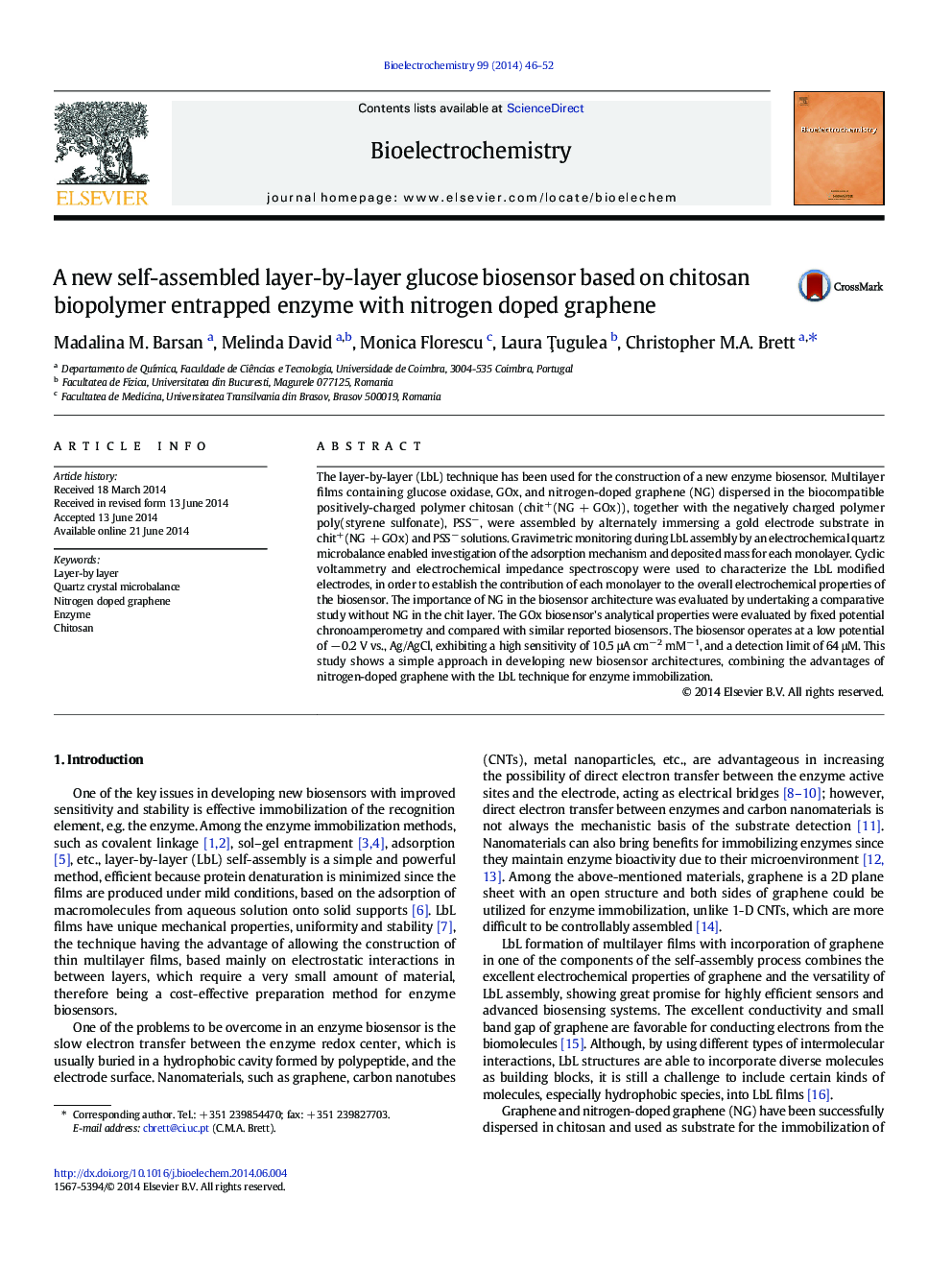| کد مقاله | کد نشریه | سال انتشار | مقاله انگلیسی | نسخه تمام متن |
|---|---|---|---|---|
| 1270844 | 1496913 | 2014 | 7 صفحه PDF | دانلود رایگان |
• New, very stable self-assembled layer by layer (LbL) enzyme biosensor
• LbL of N-doped graphene/glucose oxidase/chitosan and poly(styrene sulfonate)
• Gravimetric quartz crystal microbalance monitoring of multilayer film formation
• Characterization by cyclic voltammetry and electrochemical impedance spectroscopy
• The biosensor works at low potential with high sensitivity and operational stability.
The layer-by-layer (LbL) technique has been used for the construction of a new enzyme biosensor. Multilayer films containing glucose oxidase, GOx, and nitrogen-doped graphene (NG) dispersed in the biocompatible positively-charged polymer chitosan (chit+(NG + GOx)), together with the negatively charged polymer poly(styrene sulfonate), PSS−, were assembled by alternately immersing a gold electrode substrate in chit+(NG + GOx) and PSS− solutions. Gravimetric monitoring during LbL assembly by an electrochemical quartz microbalance enabled investigation of the adsorption mechanism and deposited mass for each monolayer. Cyclic voltammetry and electrochemical impedance spectroscopy were used to characterize the LbL modified electrodes, in order to establish the contribution of each monolayer to the overall electrochemical properties of the biosensor. The importance of NG in the biosensor architecture was evaluated by undertaking a comparative study without NG in the chit layer. The GOx biosensor's analytical properties were evaluated by fixed potential chronoamperometry and compared with similar reported biosensors. The biosensor operates at a low potential of − 0.2 V vs., Ag/AgCl, exhibiting a high sensitivity of 10.5 μA cm− 2 mM− 1, and a detection limit of 64 μM. This study shows a simple approach in developing new biosensor architectures, combining the advantages of nitrogen-doped graphene with the LbL technique for enzyme immobilization.
Figure optionsDownload as PowerPoint slide
Journal: Bioelectrochemistry - Volume 99, October 2014, Pages 46–52
